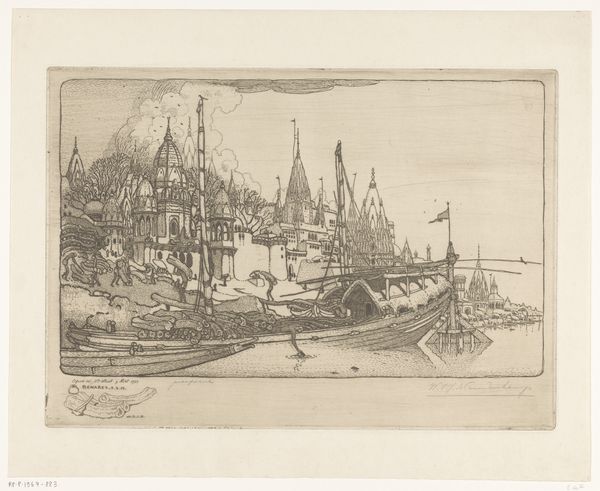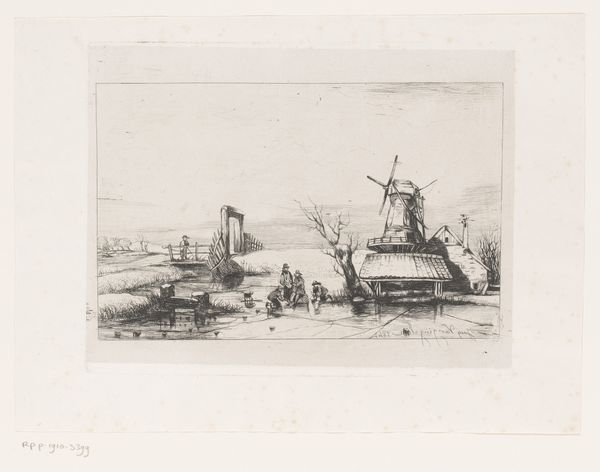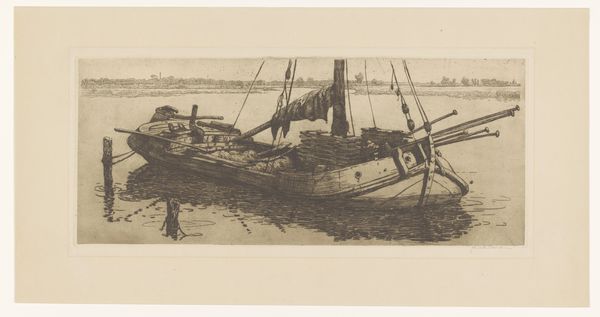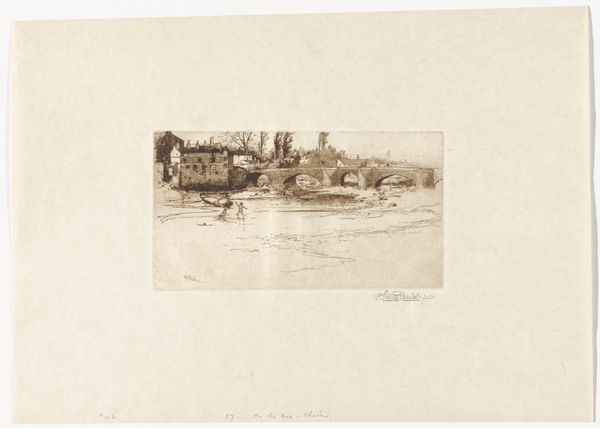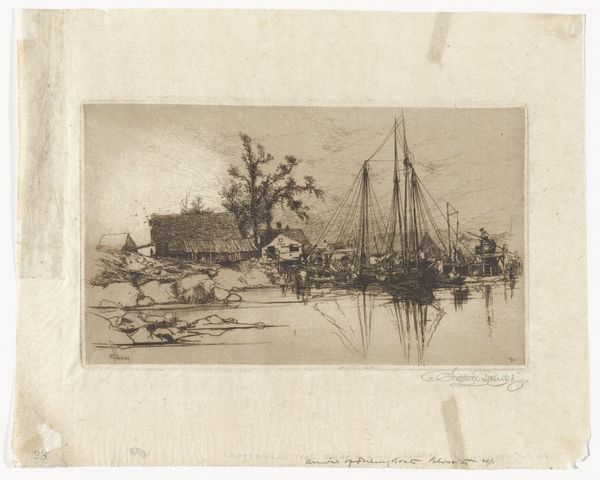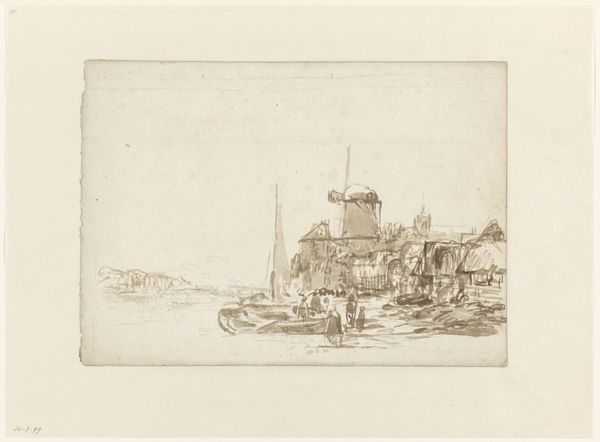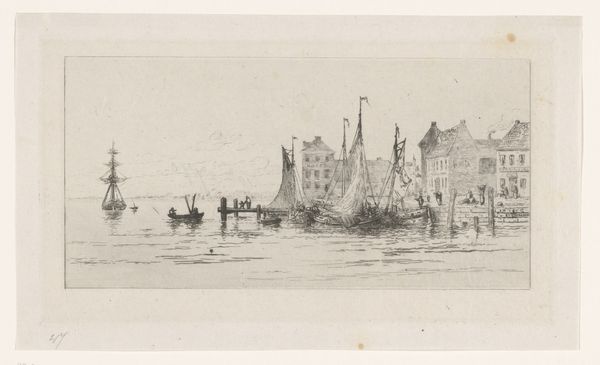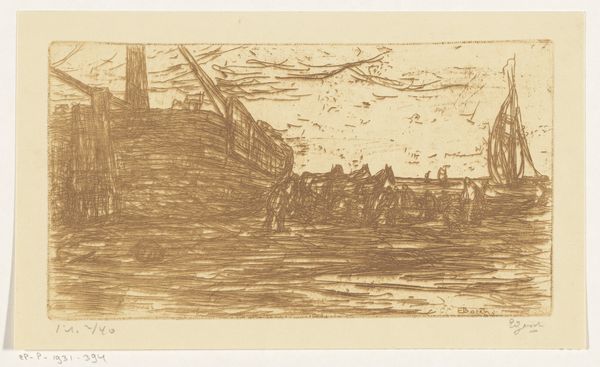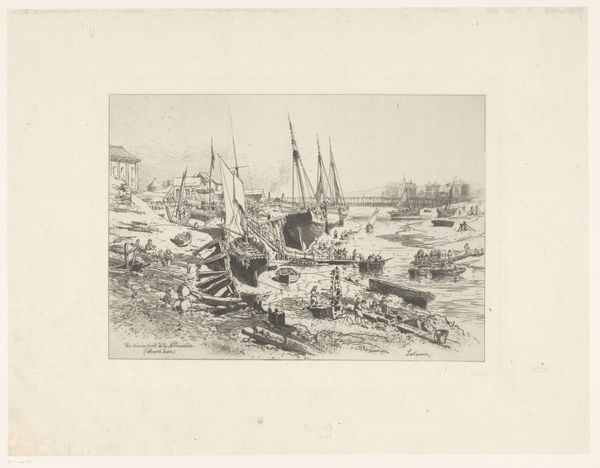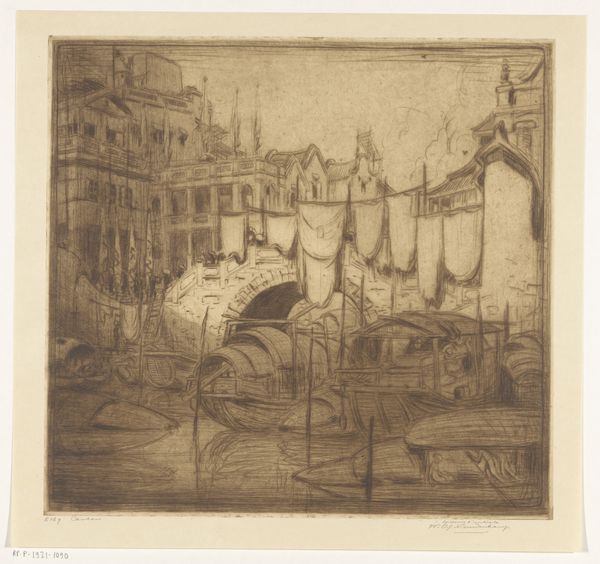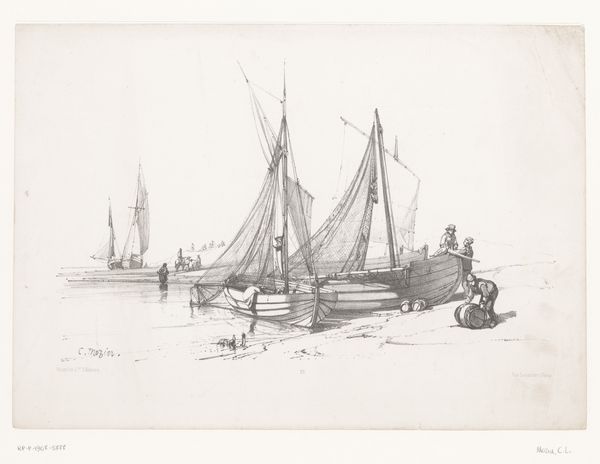
print, etching
# print
#
etching
#
landscape
#
genre-painting
#
realism
Dimensions: 7 13/16 x 11 13/16 in. (19.84 x 30 cm) (plate)12 7/8 x 17 3/8 in. (32.7 x 44.13 cm) (sheet)
Copyright: Public Domain
Editor: Here we have Stephen Parrish’s “Carleton - Bay of Fundy,” an etching from around the 19th century. I’m struck by the contrast between the detailed rendering of the village and the open, almost barren foreground. What catches your eye in this work? Curator: The piece certainly presents a dichotomy between foreground and background. I am particularly interested in the artist’s management of light and shadow. Notice how the etching technique, with its intricate network of lines, serves to model form and create areas of tonal contrast. How does the placement of the figures, both human and animal, contribute to the overall composition? Editor: Well, the figures in the foreground are smaller in scale compared to the buildings and boats. It feels like they are included to give the scene a sense of everyday life, of people simply existing within this landscape. Is that accurate? Curator: Consider their placement not merely as representational, but as formal elements contributing to the visual rhythm. The human figures mirror each other, yes? And the geese punctuate the pictorial plane, acting as visual echoes of the more densely worked structures behind them. How do you interpret that visual play between negative space and delineated forms? Editor: So it’s not just about showing the town, but about creating a structured visual experience. The texture and how the artist contrasts texture plays a critical role, then. I see it as not simply an idyllic scene but rather the thoughtful structuring of visual components. Curator: Precisely. Understanding that underlying framework enhances one's appreciation beyond mere narrative content. What is interesting, is that through its deliberate employment of line and form, the etching compels the eye to perceive a reality filtered through artistic intention. Editor: That reframing has shown me how to look beyond the depicted scene to understand Parrish’s manipulation of form, light, and composition in the etching to construct meaning, which wasn’t obvious at first glance. Thanks. Curator: Indeed. Remember always that it is often within the intricate interplay of such formal properties that the artwork reveals its essence, inviting ever more refined appreciation.
Comments
No comments
Be the first to comment and join the conversation on the ultimate creative platform.
